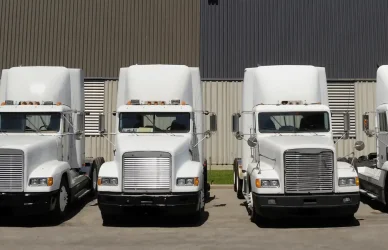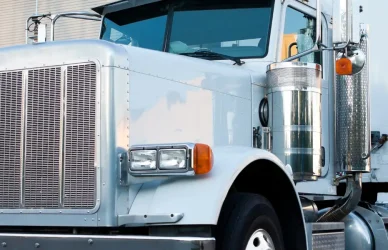In today’s trucking industry, newer trucks face issues of availability and rising prices, causing many to prolong the use of their older vehicles. With the added burden of increasing interest rates making new purchases less possible, it becomes critical for fleets to elevate their maintenance practices to extend the productivity and efficiency of their equipment. Here are seven key strategies and steps fleets can take to make the most of their equipment.
- Scheduled Maintenance:
Regular preventive maintenance remains vital. Fleets should conduct individual assessments of each truck to determine the necessary maintenance frequency based on age, mileage, environmental conditions, and usage patterns. Establishing a system to track each truck’s maintenance schedule and promptly reschedule missed sessions is crucial.
- Predictive Maintenance:
Going beyond routine schedules, predictive maintenance utilizes real-time data to address potential issues proactively. By analyzing diagnostic trouble codes and comparing them with historical data, fleets can preemptively resolve issues before they escalate. While this approach requires investment in software and skilled personnel, the benefits include significant reductions in downtime and maintenance costs, increasing overall possible revenue.
- Tracking and Measuring Maintenance KPIs:
To effectively monitor and enhance maintenance practices, maintenance managers should establish key performance indicators (KPIs). These may include the lifespan of critical components like tires and brakes, reasons for unscheduled maintenance or shop visits, frequency of on-road breakdowns, and patterns indicating systemic issues. Driver input, who are more familiar than anyone with the vehicles, is also priceless. Their daily vehicle inspection reports can provide critical insights into the trucks’ condition.
- Ongoing Personnel Training:
As truck technology evolves, continuous training for both technicians and drivers becomes imperative. Technicians need to stay aware of the latest diagnostic tools and technology, while drivers require training to recognize and report potential issues accurately. Investing in your team’s ongoing education not only enhances fleet maintenance but also aids in retaining skilled personnel, again reducing overall costs through the hiring process.
- Considering Dedicated Contract Maintenance:
Outsourcing fleet maintenance may be a viable option for some carriers. Contract maintenance allows companies to focus on their primary business without the complexities of managing an in-house fleet maintenance operation. It provides predictable costs and alleviates the burden of managing maintenance staff and facilities.
- Implementing Remote Monitoring Solutions:
Leveraging technology such as remote monitoring systems can offer real-time insights into the health and performance of fleet vehicles. These systems can detect inconsistences in performance and potential issues early on, allowing for proactive maintenance interventions. Integrating remote monitoring solutions into fleet management practices can significantly improve uptime and reduce maintenance costs.
- Exploring Alternative Fuel Options:
Transitioning to alternative fuel options, such as natural gas, can not only reduce emissions but also simplify maintenance requirements. These vehicles often have fewer moving parts, resulting in lower maintenance costs and increased reliability over time. Evaluating the feasibility of incorporating alternative fuel vehicles into the fleet can lead to long-term cost savings and environmental benefits.
As fleets navigate the complexities of maintaining older trucks while balancing financial constraints, adopting these strategies can greatly enhance the efficiency and longevity of equipment, no matter its age.











